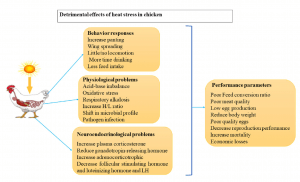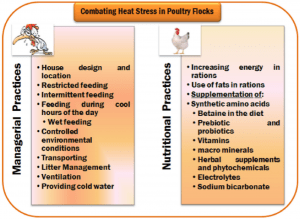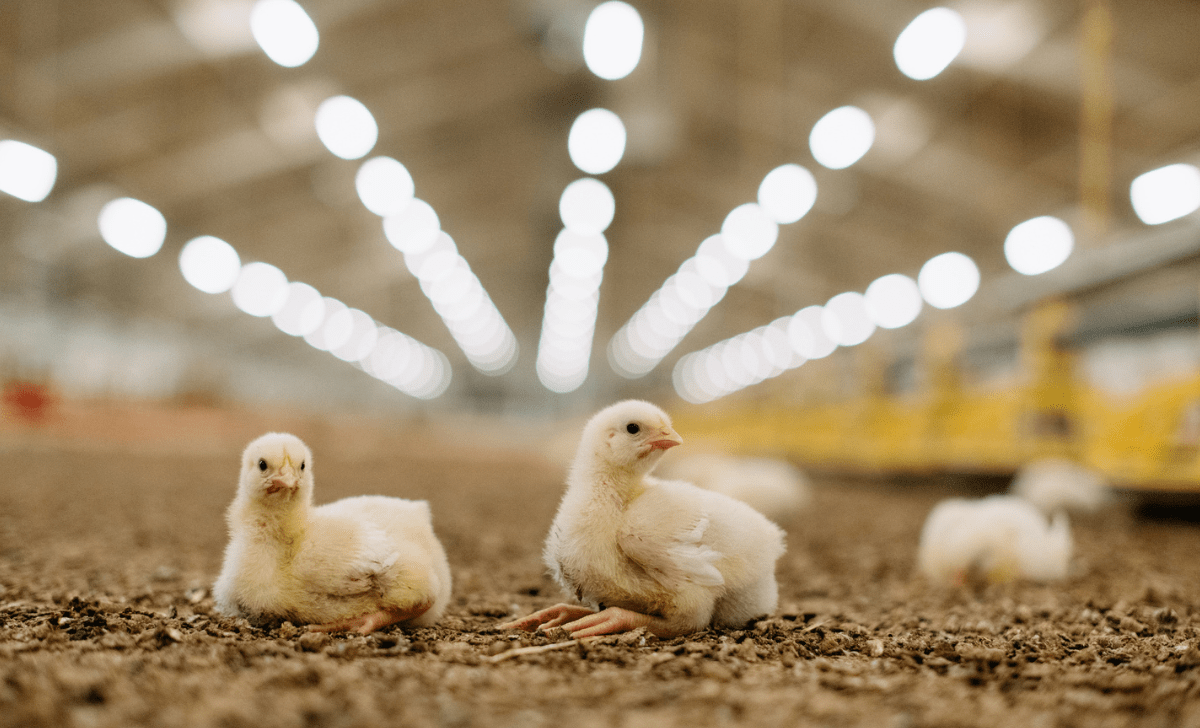Heat stress represents one of the most significant challenges facing modern poultry production, particularly as global temperatures continue to rise. When chickens cannot adequately dissipate metabolic heat, they experience hyperthermia—a cascade of physiological disruptions that affects everything from immune function to respiratory efficiency. The consequences extend far beyond individual bird welfare, creating substantial economic losses that ripple through the entire industry.
The physiological response to heat stress triggers a complex web of disturbances including immune suppression, hormonal imbalances, respiratory complications, and electrolyte disruptions. These changes ultimately manifest as diminished meat quality, poor feed efficiency, altered behavior patterns, increased mortality rates, and dramatically increased water consumption—all contributing to significant economic losses (Apalowo et al., 2024). Understanding these interconnected impacts is crucial for developing effective management strategies.

FIGURE 1: Physiological impacts of HS on broiler chickens (Mangan and Siwek, 2024)
The Economic Reality of Heat Stress
The financial impact of heat stress on the poultry industry is staggering. In the United States alone, annual losses reach an estimated $2.36 billion (Lara and Rostagno, 2013). These losses stem primarily from disrupted performance metrics and deteriorated feed conversion ratios. Beyond these direct impacts, heat stress compounds mortality issues, causing an additional $128 to $165 million in annual economic losses in the chicken industry due to increased morbidity and death rates (Madkour et al., 2022).
The challenges intensify during transportation, where high temperatures exacerbate stress and lead to measurable decreases in meat quality. This transportation stress creates an additional food safety concern by promoting colonization of birds by foodborne pathogens such as Salmonella and Campylobacter, creating risks that extend from the farm to the consumer’s table.
Research has quantified the specific performance impacts of heat stress (Liu et al., 2020):
- Feed intake reduction: 98g decrease during heat stress periods
- Body weight gain loss: 151g reduction during heat stress periods
- Feed conversion deterioration: 0.17 point worsening in feed conversion ratio
- Mortality increase: 3.74% rise in death rates
Understanding the Contributing Factors
Climate change has intensified the urgency of addressing heat stress in poultry. The Intergovernmental Panel on Climate Change reports that Earth’s average temperature between 2006 and 2015 was 1.53°C higher than the 1850-1900 average—nearly double the global temperature increase since the pre-industrial era (Ahmad et al., 2022). This accelerating warming trend makes heat stress management increasingly critical for poultry operations worldwide.
However, ambient temperature is just one piece of the puzzle. Multiple management factors contribute to heat stress development:
Environmental factors include elevated ambient temperature and humidity levels. High humidity is particularly problematic because it reduces birds‘ ability to lose heat through evaporation—their primary cooling mechanism at higher temperatures.
Infrastructure challenges encompass barn design elements such as dark-colored roofs and walls that absorb solar radiation, inadequate shelter in outdoor enclosures, and insufficient ventilation systems in both controlled and non-controlled housing environments.
Management practices that contribute to heat stress include excessive stocking densities, overcrowding that increases heat production and limits heat dissipation, and competition for feed and water resources that elevates stress levels.
Environmental quality issues such as the biodegradation of fecal matter—which releases heat and harmful gases like ammonia, methane, and hydrogen sulfide—along with increased litter moisture content and elevated ammonia levels, create conditions that make birds more susceptible to heat stress.
Comprehensive Management Strategies
Effective heat stress mitigation requires a multi-faceted approach combining environmental management, nutritional strategies, and proactive conditioning techniques. These strategies can be broadly categorized into farm-level interventions that producers can implement directly and pre-production methods applied during breeding and incubation phases.
1. Housing Design and Environmental Control
Optimizing Airflow and Ventilation Proper air circulation forms the foundation of heat stress prevention. Open-style houses work well in hot, humid environments when combined with appropriate shading, excellent air circulation, and adequate water access. The optimal house orientation runs east-west, with widths not exceeding 12 meters and doors positioned every 15-30 meters in longer buildings (Pawar et al., 2016).
Critical infrastructure specifications include sidewall heights of at least 2.1 meters with easily adjustable curtains, and proper installation and maintenance of ventilation equipment with backup generators and additional fans for emergencies. For maximum airflow efficiency, houses should feature internal recirculation fans positioned in a tunnel ventilation arrangement (Donald and William, 2002).
Surface and Surrounding Management Roof conditions significantly impact heat absorption. Clean, dust-free, reflective surfaces using materials like metallic zinc paint or aluminum effectively reflect solar radiation (Çaylı et al., 2021). Surrounding vegetation management includes maintaining grass cover to reduce sunlight reflection, continuously trimming vegetation to promote air movement, and strategically placing shade trees that enhance cooling without impeding airflow.
Evaporative Cooling Systems Evaporative panels can effectively reduce ambient temperature through water evaporation, while ventral skin wetting approaches promote cooling through water evaporation from the birds‘ skin (Cayli et al., 2021). However, operators must carefully monitor resulting humidity levels, as relative humidity increases approximately 4.5% for every 1°C decrease in temperature through evaporative cooling (Saeed et al., 2019).
While lowering stocking density can effectively mitigate heat stress, this approach comes with the economic drawback of potentially reducing the total number of birds raised per facility.
2. Early-Life Heat Conditioning
Early-life thermal conditioning represents an innovative, cost-effective approach to building heat tolerance. This technique involves exposing broiler chicks to controlled high ambient temperatures—such as 36°C for 24 hours at 3-5 days of age, or 40°C for 24 hours at 5 days old—to induce heat resistance and thermotolerance throughout their lives (Lin et al., 2006; De Basilio et al., 2003).
When properly implemented, this method can lead to improved growth performance with higher final body weight gains, decreased mortality rates, and improved feed efficiency during heat stress periods. While birds may experience temporary early growth slowdowns, the long-term benefits typically outweigh these short-term effects.
Important caveat: Early-life heat conditioning requires careful management by experienced personnel. Poor implementation can result in compromised chick quality, early mortality, and negative impacts on overall performance.
3. Strategic Feeding Approaches
Feed represents the highest cost in broiler production, making feed intake optimization during heat stress periods crucial for economic sustainability. Heat stress rapidly decreases feed consumption, necessitating strategic adjustments to feeding programs.
Energy Optimization Through Fat Supplementation Increasing dietary energy levels through fat supplementation shows particular promise. Fat produces lower heat increments during metabolism compared to proteins and carbohydrates, and studies demonstrate improved broiler performance and nutrient utilization in heat-stressed birds. Research indicates that adding 5% fat can significantly improve broiler performance (Nawaz et al., 2021).
Feed Physical Properties Coarse feed with larger particle sizes offers multiple benefits for heat-stressed birds. This approach increases water retention in birds‘ bodies for evaporative cooling, decreases body temperature, promotes gastrointestinal tract development, and reduces heat generation, effectively attenuating heat stress.
Alternative Feeding Strategies While feed restriction can reduce metabolic rate, rectal temperature, and mortality, it leads to decreased growth rates and delayed marketing age, making it unpopular in commercial operations (Teyssier et al., 2022). Dual feeding programs—offering protein-rich feed during cooler periods and energy-rich feed during warmer periods—can reduce body temperature and mortality but are often unsuitable for commercial operations due to cost and logistical constraints (Teyssier et al., 2022).
Wet feeding, although capable of improving feed intake and body weight, poses risks of promoting fungal growth and mycotoxicosis, limiting its widespread adoption (Wasti et al., 2020).
4. Water Management Excellence
Water management becomes critically important during heat stress periods, as consumption increases dramatically. Understanding and accommodating these increased demands is essential for maintaining bird health and performance.
Understanding Increased Demand The water-to-feed intake ratio demonstrates the dramatic impact of temperature on consumption patterns. At 15°C, birds maintain a ratio of 1.82:1, but when temperatures rise to 30-35°C, this ratio increases to 4.9:1 (Holik, 2010). On average, birds consume 2-3 ml of drinking water per gram of feed during winter, but this increases to 4-5 ml during summer months (Abbas et al., 2008).
Infrastructure Requirements Maintaining adequate water flow requires at least 70 ml/minute per nipple drinker. Regular systematic checks of all drinkers—not just visual inspections—ensure proper function and identify restrictions from mineral buildup that require cleaning (Donald and Williams, 2002).
Water Quality and Temperature Management Optimal water temperatures below 25°C encourage drinking and help reduce birds‘ core temperatures. Routine flushing of water lines and waterers maintains freshness and coolness. When possible, adding ice to header tanks provides additional cooling benefits.
5. Nutritional Supplements for Heat Stress Mitigation
Strategic supplementation with beneficial compounds including phytochemicals, bioactive ingredients, and specialized feed additives can significantly reduce heat stress impacts. These supplements function as immunomodulators, gut modifiers, growth modulators, anti-inflammatory agents, and antioxidants (Fatima et al., 2024).
Antioxidants for Oxidative Stress Management
- Vitamin E: Consistently improves various performance parameters and alleviates heat stress impacts
- Vitamin C: Particularly crucial since poultry’s natural synthesis capacity is limited. Improves growth rate, nutrient utilization, immune response, and antioxidant status
- Lycopene: Acts as a free radical scavenger and activates host antioxidant enzymes, improving feed intake, body weight, feed conversion ratio, and oxidative status (Arain et al., 2018)
- Resveratrol: This natural polyphenol induces antioxidant and heat shock protein expression, improving antioxidant capacity, daily gain, and reducing stress markers (He et al., 2019)
- Epigallocatechin gallate: A green tea polyphenol with high antioxidant and anti-inflammatory properties that increases body weight, feed intake, and improves liver antioxidant enzyme activity (Luo et al., 2018)
- Curcumin: A polyphenol that mitigates heat stress by reducing oxidative stress and inflammation while improving growth performance, laying performance, egg quality, and immune function (Zhang et al., 2018)
Electrolyte Balance Restoration
- Sodium Bicarbonate (NaHCO₃): Particularly effective in combating respiratory alkalosis caused by panting during heat stress, improving eggshell quality and broiler performance (Borges et al., 2004)
- Potassium Chloride (KCl): Effective in ameliorating chronic heat stress and improving feed conversion ratios by restoring electrolyte balance (Naseem et al., 2005)
- Combined electrolyte supplementation: Research suggests benefits from combining both sodium bicarbonate and potassium chloride (Naseem et al., 2005)
Additional Beneficial Supplements
- Vitamin A: Improves body weight gain and feed efficiency in heat-stressed broilers
- Sodium Selenite/Selenomethionine: Enhances carcass quality, performance, feed intake, and body weight in heat-stressed birds (Sahin et al., 2008)
- Betaine: Improves feed intake and carcass traits in broilers during heat stress, particularly when combined with Vitamin C (Maddahian et al., 2021)

FIGURE 2: Recapitulation of the HS management methods (Saeed et al., 2019)
Conclusion: A Profitable Path Forward
Effective heat stress management in poultry production represents both an animal welfare imperative and an economic opportunity. By implementing comprehensive strategies that maximize heat loss from housing facilities and lower internal temperatures, producers can significantly boost the profitability of their operations.
The multi-faceted approach outlined—encompassing environmental controls, early-life conditioning, strategic feeding, optimized water management, and targeted supplementation—ensures that birds remain comfortable and productive even during challenging summer conditions. This not only increases poultry meat production efficiency but also contributes to meeting global protein needs and addressing food security challenges, particularly in developing countries where both heat stress and food shortages pose significant concerns.
As climate change continues to intensify global temperature patterns, the implementation of these evidence-based heat stress management strategies will become increasingly critical for sustainable poultry production worldwide.
References
Abbas, A. O., El-Dein, A. A., Desoky, A. A., & Galal, M. A. (2008). The effects of photoperiod programs on broiler chicken performance and immune response. International Journal of Poultry Science, 7(7), 665-671.
Ahmad, R., Yu, Y. H., Hsiao, F. S., Su, C. H., Liu, H. C., Tobin, I., Zhang, G., & Cheng, Y. H. (2022). Influence of Heat Stress on Poultry Growth Performance, Intestinal Inflammation, and Immune Function and Potential Mitigation by Probiotics. Animals: an open access journal from MDPI, 12(17), 2297. https://doi.org/10.3390/ani12172297
Apalowo, O. O., Ekunseitan, D. A., & Fasina, Y. O. (2024). Impact of heat stress on broiler chicken production. Poultry, 3(2), 107-128.
Arain, M. A., Mei, Z., Hassan, F. U., Saeed, M., Alagawany, M., Shar, A. H., & Rajput, I. R. (2018). Lycopene: a natural antioxidant for prevention of heat-induced oxidative stress in poultry. World’s Poultry Science Journal, 74(1), 89-100.
Borges, S. A., Da Silva, A. F., Majorka, A., Hooge, D. M., & Cummings, K. R. (2004). Physiological responses of broiler chickens to heat stress and dietary electrolyte balance (sodium plus potassium minus chloride, milliequivalents per kilogram). Poultry science, 83(9), 1551-1558.
Çaylı, A., Akyüz, A., Üstün, S., & Yeter, B. (2021). Efficiency of two different types of evaporative cooling systems in broiler houses in Eastern Mediterranean climate conditions. Thermal Science and Engineering Progress, 22, 100844.
Dahadha, R., Hundam, S., Al-Zghoul, M. B., Alanagreh, L. A., Ababneh, M., Mayyas, M., … & Dalloul, R. A. (2025). Embryonic Thermal Manipulation Affects Body Performance Parameters and Cecum Microbiome in Broiler Chickens in Response to Post-Hatch Chronic Heat Stress Challenge. Animals, 15(12), 1677.
De Basilio, V., Requena, F., Leon, A., Vilarino, M., & Picard, M. (2003). Early age thermal conditioning immediately reduces body temperature of broiler chicks in a tropical environment. Poultry science, 82(8), 1235-1241.
Donald, D., & William, D. W. (2002). Commercial chicken meat and egg production. Kluwer Academic Publishers, 3, 187-243.
Fatima, N., Ahmad, M., Usman, M., Haider, U., Raza Farhan, M. H., Iftikhar, E., … & Narayan, E. (2024). Role of feed additives in mitigating the impact of heat stress on poultry gut health and productivity. World’s Poultry Science Journal, 80(4), 1055-1075.
He, S., Li, S., Arowolo, M. A., Yu, Q., Chen, F., Hu, R., & He, J. (2019). Effect of resveratrol on growth performance, rectal temperature and serum parameters of yellow‐feather broilers under heat stress. Animal Science Journal, 90(3), 401-411.
Holik, V., 2010. Managing heat stress – Part 1 – layers respond to hot climatic conditions Poultry world. Accessed at. https://www.poultryworld.net/Breeders/General/2010/
Lara, L. J., & Rostagno, M. H. (2013). Impact of heat stress on poultry production. Animals, 3(2), 356-369.
Lin, H., Jiao, H. C., Buyse, J., & Decuypere, E. (2006). Strategies for preventing heat stress in poultry. World’s Poultry Science Journal, 62(1), 71-86.
Liu, L., Ren, M., Ren, K., Jin, Y., & Yan, M. (2020). Heat stress impacts on broiler performance: a systematic review and meta-analysis. Poultry Science, 99(11), 6205.
Luo, J., Song, J., Liu, L., Xue, B., Tian, G., & Yang, Y. (2018). Effect of epigallocatechin gallate on growth performance and serum biochemical metabolites in heat-stressed broilers. Poultry Science, 97(2), 599-606.
Maddahian, A., Dadvar, P., Morovat, M., & Bafti, M. S. (2021). The Effect of in ovo Feeding Compared with Dietary Feeding of Betaine on Performance, Immunity and Liver Activity of Broiler Chickens Exposed to High Temperatures. Iranian Journal of Applied Animal Science, 11(2).
Mangan, M., & Siwek, M. (2024). Strategies to combat heat stress in poultry production—A review. Journal of Animal Physiology and Animal Nutrition, 108(3), 576-595.
Naseem, M. T., Naseem, S., Younus, M., Zafar, I. C., Aamir, G., Asim, A., & Akhter, S. (2005). Effect of potassium chloride and sodium bicarbonate supplementation on thermotolerance of broilers exposed to heat stress. International Journal of Poultry Science, 4(11), 891-895.
Nawaz, A. H., Amoah, K., Leng, Q. Y., Zheng, J. H., Zhang, W. L., & Zhang, L. (2021). Poultry response to heat stress: Its physiological, metabolic, and genetic implications on meat production and quality including strategies to improve broiler production in a warming world. Frontiers in veterinary science, 8, 699081.
Pawar, S. S., Sajjanar, B., Lonkar, V. D., Kurade, N. P., Kadam, A. S., Nirmal, A. V., … & Bal, S. K. (2016). Assessing and mitigating the impact of heat stress in poultry. Adv. Anim. Vet. Sci, 4(6), 332-341.
Saeed, M., Abbas, G., Alagawany, M., Kamboh, A. A., Abd El-Hack, M. E., Khafaga, A. F., & Chao, S. (2019). Heat stress management in poultry farms: A comprehensive overview. Journal of thermal biology, 84, 414-425.
Sahin, N., Onderci, M., Sahin, K., & Kucuk, O. (2008). Supplementation with organic or inorganic selenium in heat-distressed quail. Biological Trace Element Research, 122(3), 229-237.
Teyssier, J. R., Brugaletta, G., Sirri, F., Dridi, S., & Rochell, S. J. (2022). A review of heat stress in chickens. Part II: Insights into protein and energy utilization and feeding. Frontiers in physiology, 13, 943612. https://doi.org/10.3389/fphys.2022.943612
Zhang, J. F., Bai, K. W., Su, W. P., Wang, A. A., Zhang, L. L., Huang, K. H., & Wang, T. (2018). Curcumin attenuates heat-stress-induced oxidant damage by simultaneous activation of GSH-related antioxidant enzymes and Nrf2-mediated phase II detoxifying enzyme systems in broiler chickens. Poultry science, 97(4), 1209-1219.
